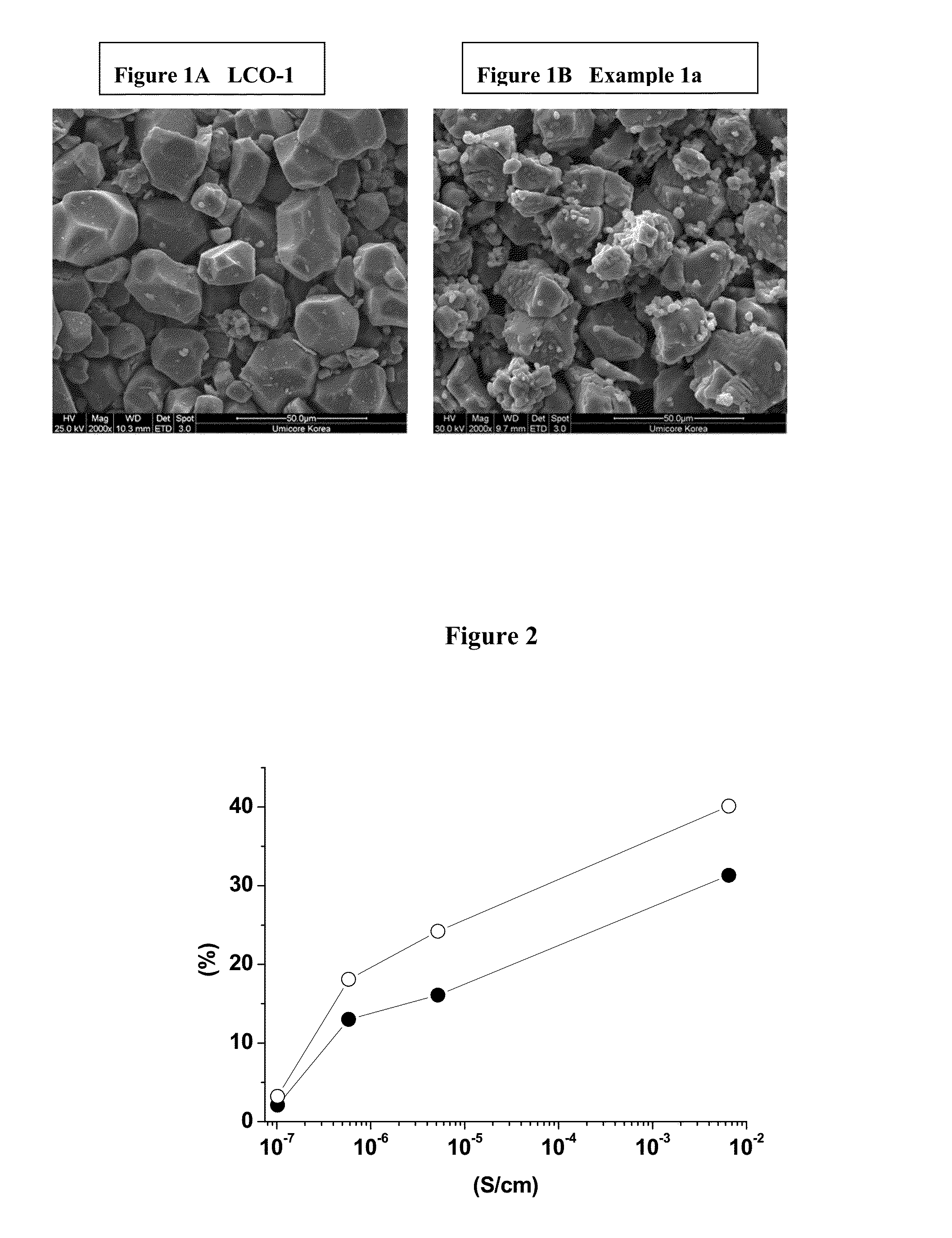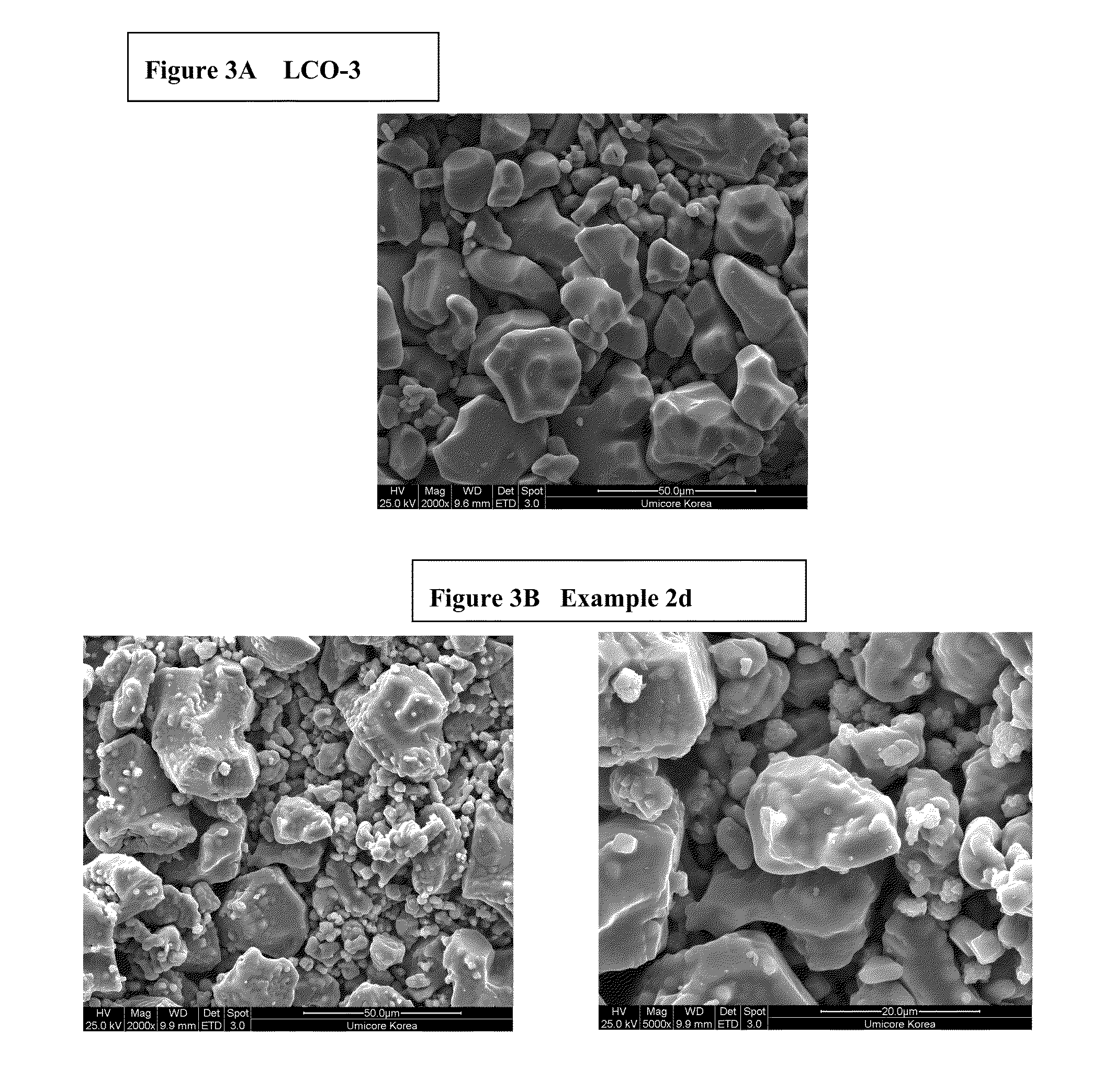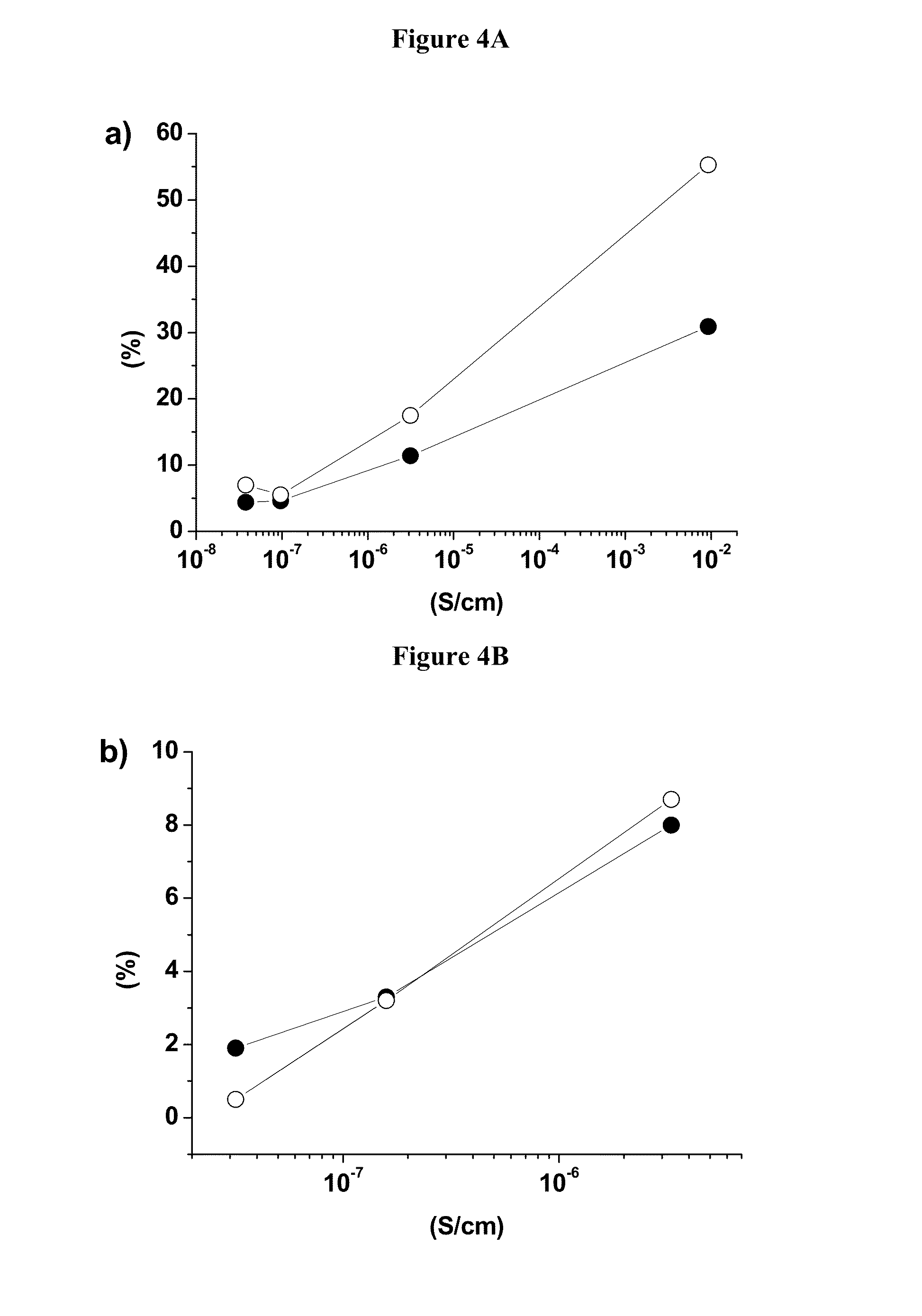Cathode Material for Lithium-Ion Rechargeable Batteries
- Summary
- Abstract
- Description
- Claims
- Application Information
AI Technical Summary
Benefits of technology
Problems solved by technology
Method used
Image
Examples
example 1
[0079]This example demonstrates that cycle stability improves as electrical conductivity decreases. The improved stability and decrease of conductivity is achieved by optimizing the Li:metal ratio.
[0080]Preparation of LCO-1: 0.25 mol % titanium and 0.5 mol % magnesium doped Co(OH)2 is prepared in a pilot line, as precursor for LiCoO2. Titanium and magnesium doped LiCoO2 (noted LCO-1) is obtained by means of a standard high temperature solid state synthesis by mixing the precursor with Li2CO3 to achieve an average particle size of 25 μm.
[0081]Preparation of island-coated LCO-1: A cathode powder material is prepared by mixing 95 wt. % of titanium and magnesium doped LiCoO2 (LCO-1), with 5 wt. % of MOOH mixed transition metal oxy-hydroxide with M=Ni0.55Mn0.30Co0.15 and either none or pre-determined amounts of Li2CO3. Examples 1a, 1b and 1c are prepared according to Table 1 and sufficiently mixed to prepare a homogeneous raw material mixture. The mixture is placed in an alumina crucible...
example 2
[0092]This example will demonstrate that the cycling stability of island coated LiCoO2 is much higher than that of uncoated LiCoO2, where at the same time its electrical conductivity is about five orders of magnitude lower. The example also provides clear evidence that the cycling stability of the island coated LiCoO2 increases with the decrease of the intrinsic electrical conductivity.
[0093]Preparation of LCO-2: 1 mol % magnesium doped Co(OH)2 as precursor for LiCoO2 is prepared in a pilot line. Magnesium doped LiCoO2 (noted LCO-2) is obtained by means of a standard high temperature solid state synthesis by mixing the precursor with Li2CO3 to achieve an average particle size of 25 μm.
[0094]Preparation of LCO-3: 1 mol % magnesium doped cobalt tetroxide (Co3O4) powder as precursor for LiCoO2 is used (commercially available product from Umicore, Korea). Magnesium doped LiCoO2 (noted LCO-3) is obtained by means of a standard high temperature solid state synthesis by mixing the precurso...
example 3
[0098]This example demonstrates that island coated LiCoO2 having an electronic insulating behavior has superior cycling stability in full cells.
[0099]Preparation of Example 3 (Ex3): Ex3 is prepared on a pilot production line by sintering a mixture of LCO-3 and MOOH (M=Ni0.55Mn0.30Co0.15) in a 95:5 molar ratio and appropriate lithium carbonate addition to achieve a conductivity of less than 5*10−8 S / cm. The average particle size of Ex3 is 25 μm. In this case, the electrical conductivity under an applied pressure of 63 MPa is measured to be 3.94*10−8 S / cm. Coin cell performances at 4.5V and 4.6V of Ex3 are listed in Table 5a and show outstanding electrochemical performances.
TABLE 5aElectrical conductivity and electrochemicalperformances at 4.5 V and 4.6 V of Example 3.DischargeDischargeRatecapacitycapacityperfor-CapacityEnergyElectr.0.1 C1 Cmancefadingfadingconductivity(mAh / g)(mAh / g)3 C (%)1 C (%)1 C (%)(S · cm−1)Example 3187.3183.494.911.470.873.94*10−8at 4.5 VExample 3218.3214.620.2...
PUM
 Login to View More
Login to View More Abstract
Description
Claims
Application Information
 Login to View More
Login to View More - R&D
- Intellectual Property
- Life Sciences
- Materials
- Tech Scout
- Unparalleled Data Quality
- Higher Quality Content
- 60% Fewer Hallucinations
Browse by: Latest US Patents, China's latest patents, Technical Efficacy Thesaurus, Application Domain, Technology Topic, Popular Technical Reports.
© 2025 PatSnap. All rights reserved.Legal|Privacy policy|Modern Slavery Act Transparency Statement|Sitemap|About US| Contact US: help@patsnap.com



